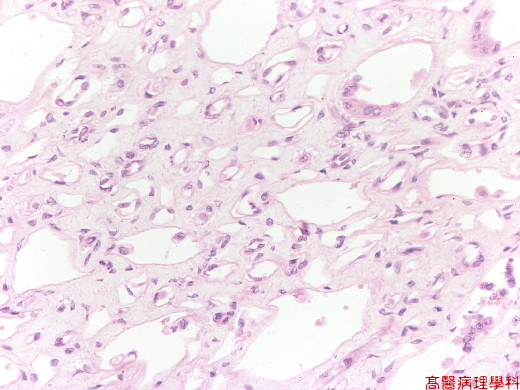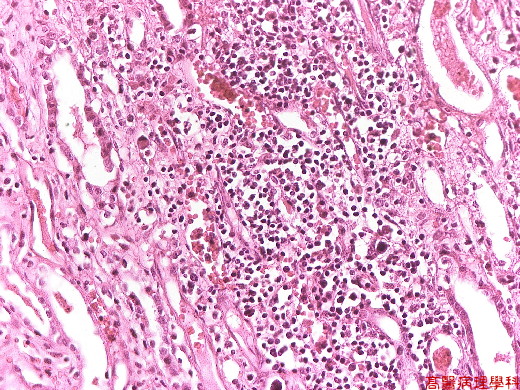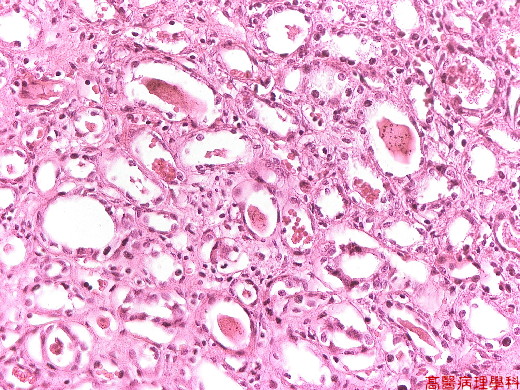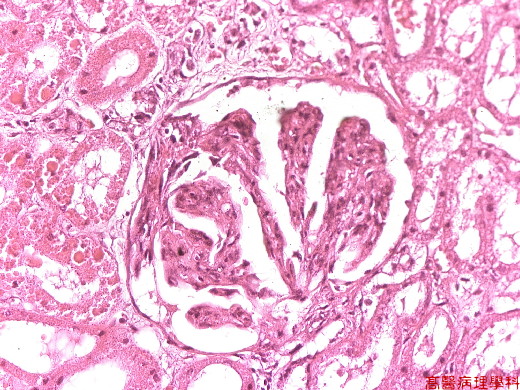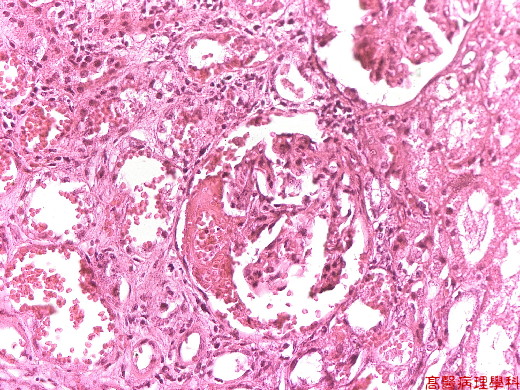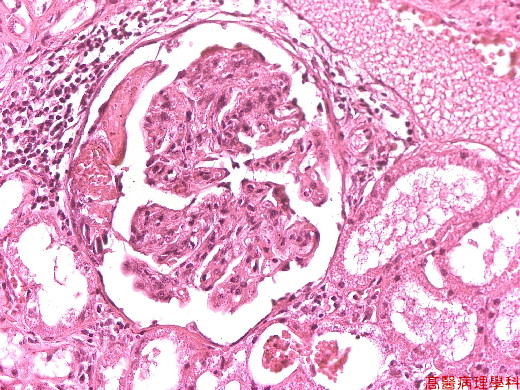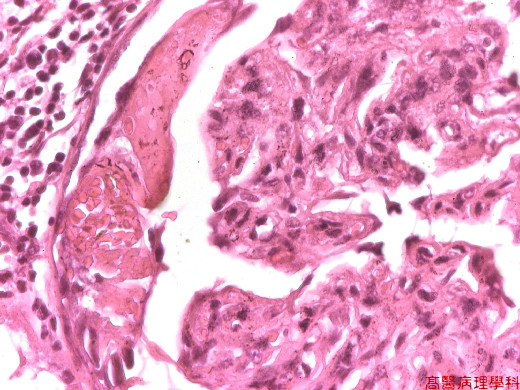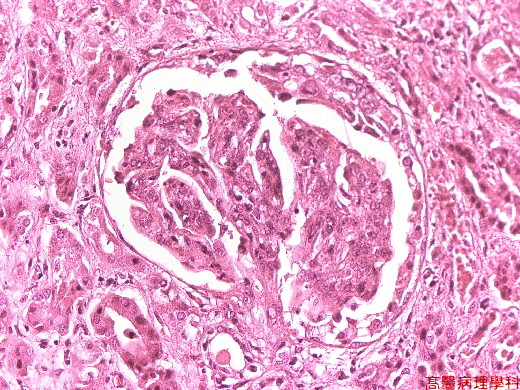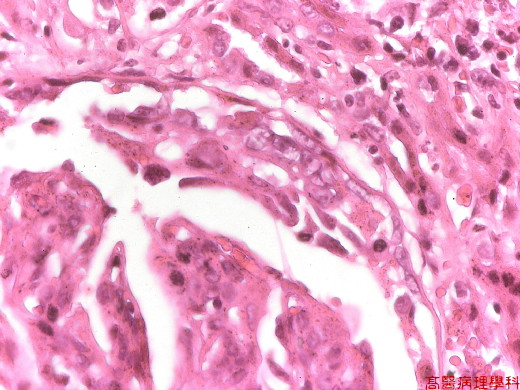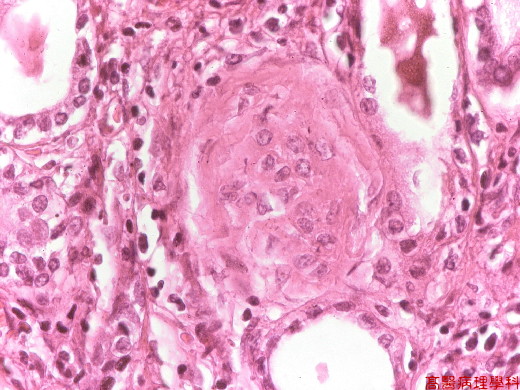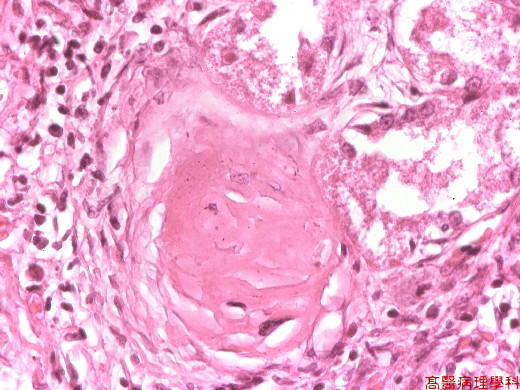《Slide
124.》Rapidly
progressive glomerulonephritis (RPGN),
Kidney
A. Brief Descriptions:
-
A syndrome associated with severe glomerular injury and does not denote a specific etiologic form of glomrulonephritis.
-
Loss of renal function associated with severe oliguria and death from renal failure within week to months.
B. Gross Findings:
-
The kidney is enlarged and pale, often with petechial hemorrhages on the cortical surfaces.
C. Micro Findings:
-
Diffuse crescentic glomerulonephritis.
-
Massive proliferation of cells (crescent formation) in Bowman's space, affecting a high percentage of glomeruli, & quickly develop renal failure.
-
Glomeruli:
-
Crescent on the inside of Bowman's capsule, from a focal & segmental accumulation of a few cells lining Bowman's capsule to extensively circumferential involvement.
-
Cellular, fibrocellular or fibrotic crescent.
-
Minimal change in tuft & tubules in early stage, then tubular atrophy, fibrosis & scarring in progressive patient.
-
Edematous interstitium with mononuclear cells infiltration.
-
D. Others:
略.
E. Reference:
-
Robbins Pathologic Basis of Disease, 6th ed. p.951-952
|
|
【 Fig. 124-1 (20X)】Degenerated and regenerated tubules.Note edematous stroma.
|
|
【 Fig. 124-2 (10X)】Hemorrhagic and chronic inflamed stroma.
|
|
【 Fig. 124-3 (20X)】Hyaline casts in renal tubules.
|
|
【 Fig. 124-4 (20X)】Crescent on the inside of Bowman's capsule.
|
|
【 Fig. 124-5 (20X)】Crescent on the inside of Bowman's capsule.
|
|
【 Fig. 124-6 (20X)】Crescent on the inside of Bowman's capsule.
|
|
【 Fig. 124-7 (40X)】Crescent on the inside of Bowman's capsule.
|
|
【 Fig. 124-8 (20X)】Crescent on the inside of Bowman's capsule.
|
|
【 Fig. 124-9 (40X)】Crescent on the inside of Bowman's capsule.
|
|
【 Fig. 124-10 (40X)】Some glomerulus demonstrates sclerosing change.
|
|
【 Fig. 124-11 (40X)】Some glomerulus undergoes sclerosing change.
